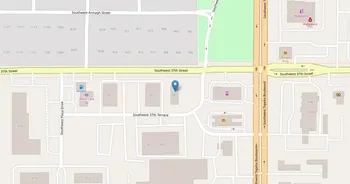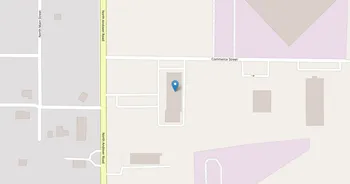Rasmussen University, Kansas : Overview, Courses, Scholarships & Rankings
About Rasmussen University
Set in Kansas's capital, Rasmussen University's Topeka campus is known for career-focused academics and applied learning. Students build practical skills across broad areas like health, business, and technology, with classes that feel conversational and hands-on. Facilities include modern classrooms and labs, tech-enabled study spaces, and easy access to tutoring, advising, and a career team.
Campus life feels close-knit and down to earth. Many learners balance jobs and family, so clubs, study groups, and short pop-up events fit real schedules. Career prep shows up in employer talks, resume help, and regional connections that reach into hospitals, nonprofits, and nearby state offices. Topeka adds parks, local coffee, and a growing arts scene. It's practical, not flashy, and that's part of the appeal.
Key Institutional Details
Contact & Profile
Academic & Institutional
Academic Programs & Fields of Study
Rasmussen University, Kansas offers 11 degree programs across 7 major academic fields, graduating approximately 152 students annually. The most popular fields by graduate volume are Health (1 programs, 134 graduates), Business (5 programs, 10 graduates), Education (1 programs, 3 graduates), Law (1 programs, 2 graduates) and Computer & IT (1 programs, 1 graduates). Explore program details, award levels, and graduate demographics below.
Health (1 programs, 134 graduates)
Healthcare Professions, Medical Sciences and Clinical Practice
| Program Name | Graduates | Gender Distribution | Award Levels | CIP Code |
|---|---|---|---|---|
| Registered Nursing | 134 |
|
Associate's
Bachelor's
|
51.3801 |
Business (5 programs, 10 graduates)
Business Administration, Marketing and Entrepreneurship
| Program Name | Graduates | Gender Distribution | Award Levels | CIP Code |
|---|---|---|---|---|
| Business Administration and Management | 4 |
|
Associate's
|
52.0201 |
| Accounting and Bookkeeping Technology | 2 |
|
Associate's
|
52.0302 |
| Human Resources Management | 2 |
|
Associate's
|
52.1001 |
| Management Information Systems | 1 |
|
Associate's
|
52.1201 |
| Marketing Management | 1 |
|
Associate's
|
52.1401 |
Education (1 programs, 3 graduates)
Educational Sciences, Teaching Methods and Pedagogy
| Program Name | Graduates | Gender Distribution | Award Levels | CIP Code |
|---|---|---|---|---|
| Early Childhood Education | 3 |
|
Associate's
|
13.1210 |
Law (1 programs, 2 graduates)
Legal Studies, Jurisprudence and Professional Law Practice
| Program Name | Graduates | Gender Distribution | Award Levels | CIP Code |
|---|---|---|---|---|
| Legal Assistant and Paralegal | 2 |
|
Associate's
|
22.0302 |
Computer & IT (1 programs, 1 graduates)
Computer Science, Information Technology and Cybersecurity
| Program Name | Graduates | Gender Distribution | Award Levels | CIP Code |
|---|---|---|---|---|
| Network and System Administration | 1 |
|
Associate's
|
11.1001 |
Engineering (1 programs, 1 graduates)
Engineering Sciences and Applied Technology Solutions
| Program Name | Graduates | Gender Distribution | Award Levels | CIP Code |
|---|---|---|---|---|
| Software Engineering | 1 |
|
Associate's
|
14.0903 |
Arts (1 programs, 1 graduates)
Fine Arts, Design Studies and Creative Performance
| Program Name | Graduates | Gender Distribution | Award Levels | CIP Code |
|---|---|---|---|---|
| Graphic Design | 1 |
|
Associate's
|
50.0409 |
Tuition, Fees & Estimated Costs
Overview of tuition rates, housing, and other annual education expenses for undergraduate and graduate students
Financial Aid & Student Support
Summary of scholarships, grants, student loans, and financial aid statistics for undergraduate students
Student Success Metrics
Graduation rates and post-graduation earnings to help assess student outcomes and long-term value of education.
Loan Burden & Repayment Outcomes
Breakdown of loan repayment rates and student debt levels by income and dependency status.
Frequently Asked Questions
Find answers to the most common questions about Rasmussen University, Kansas
How much does it cost to attend Rasmussen University, Kansas?
The annual tuition at Rasmussen University, Kansas is $15,115 for in-state students. When including room and board, books, and other expenses, the total estimated cost is approximately $15,147 for in-state students. Additional costs include room and board $9,936 (off-campus) and books and supplies $32.
Data based on IPEDS program completions for 2022-2023 academic year. Tuition and cost estimates are approximate and may not include all fees, personal expenses, or transportation costs.
What academic programs and degree levels does Rasmussen University, Kansas offer?
Rasmussen University, Kansas offers 11 academic programs across 7 major fields of study, with available degree levels: Certificate (1-2 yrs), Associate's, Bachelor's, Master's, Post-Master's, Doctorate (Professional), Other Award.
Most popular program areas include:
- Healthcare Professions, Medical Sciences and Clinical Practice (1 programs)
- Business Administration, Marketing and Entrepreneurship (5 programs)
- Educational Sciences, Teaching Methods and Pedagogy (1 programs)
- Legal Studies, Jurisprudence and Professional Law Practice (1 programs)
- Computer Science, Information Technology and Cybersecurity (1 programs)
Data based on IPEDS program completions for 2023-2024 academic year. Numbers reflect programs where students graduated, not all offered programs.
What financial aid and scholarships are available at Rasmussen University, Kansas?
Rasmussen University, Kansas provides financial aid to 4% of first-time, full-time students, with average grants of $7,550 and average loans of $11,490.
Average financial aid amounts by type:
- Pell grants: $7,020
- Institutional grants: $1,265
- Federal loans: $10,169
The university supports 21 students with grants and 21 students with loans annually.
Data based on IPEDS for 2022-2023 academic year. Financial aid amounts and percentages may vary by program, enrollment status, and individual circumstances.
What is the average salary for Rasmussen University, Kansas graduates?
Rasmussen University, Kansas graduates earn a median salary of $41,436 after 6 years and $39,080 after 10 years.
The salary range 10 years after graduation spans from $21,835 (25th percentile) to $57,587 (75th percentile), with top earners reaching $58,200 (90th percentile).
Data based on IPEDS for 2022-2023 academic year. Salary data reflects graduates who received federal financial aid (approximately 60% of all graduates). Actual earnings may vary significantly based on program, location, and individual circumstances.
Related Universities




Found something useful? Help others discover it too! Share with friends, on social media, or save for later - every share helps someone find the information they need.